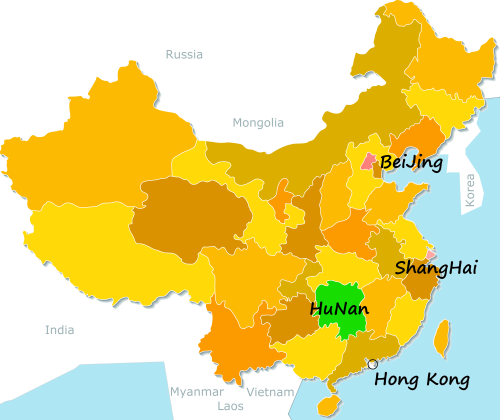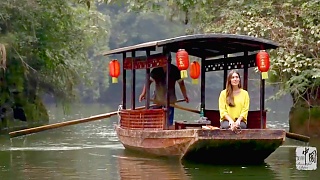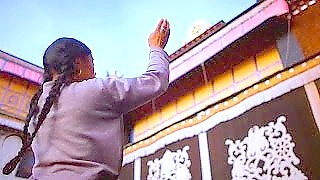
|
50 Small Eats Dishes in China
Dumplings (饺子, jiǎozi) - Steamed or fried dough pockets filled with meat or vegetables.
Spring Rolls (春卷, chūn juǎn) - Crispy rolls filled with vegetables and sometimes meat.
Scallion Pancakes (葱油饼, cōng yóu bǐng) - Flaky, savory pancakes with scallions.
Sticky Rice Dumplings (粽子, zòngzi) - Glutinous rice wrapped in bamboo leaves, usually with fillings like meat or beans.
Soup Dumplings (小笼包, xiǎo lóng bāo) - Steamed dumplings filled with broth and meat.
Sichuan Spicy Wontons (红油抄手, hóng yóu chāo shǒu) - Wontons in chili oil with a spicy sauce.
Sesame Balls (煎堆, jiān duī) - Deep-fried glutinous rice balls coated in sesame seeds.
Fried Stinky Tofu (臭豆腐, chòu dòufu) - Fermented tofu fried until crispy.
Guokui (锅盔, guō kuī) - Crispy, pan-fried flatbread.
Chinese Crepes (煎饼果子, jiān bǐng guǒzi) - Thin pancakes filled with savory ingredients.
Roujiamo (肉夹馍, ròu jiá mó) - Chinese-style hamburger with shredded meat inside a flatbread.
Tea Eggs (茶叶蛋, chá yè dàn) - Hard-boiled eggs marinated in tea and spices.
Fried Dough Sticks (油条, yóutiáo) - Crispy fried dough sticks, often eaten with soy milk.
Cold Noodles (凉面, liáng miàn) - Chilled noodles served with a savory sauce.
Congee (粥, zhōu) - Rice porridge often served with various toppings.
Baozi (包子, bāozi) - Steamed buns filled with meat or vegetables.
Liangpi (凉皮, liángpí) - Cold noodles made from wheat or rice flour, served with spicy sauce.
Jianbing (煎饼, jiānbing) - Savory Chinese crepe filled with egg, crispy cracker, and sauces.
Fried Rice Balls (炸年糕, zhà nián gāo) - Crispy fried glutinous rice balls.
Fried Mashed Taro (芋泥, yùní) - Mashed taro fried until golden and crispy.
Lotus Root Stuffed with Sticky Rice (藕夹, ǒu jiá) - Sticky rice stuffed into hollowed-out lotus root slices.
Chive Pockets (韭菜盒子, jiǔcài hézi) - Pan-fried dumplings filled with chives and sometimes eggs.
Lamb Skewers (羊肉串, yángròu chuàn) - Grilled skewers of seasoned lamb.
Steamed Buns (馒头, mántou) - Plain steamed bread often served with dishes.
Fried Glutinous Rice Cakes (糍粑, cíbā) - Sticky rice cakes fried until crispy.
Stuffed Tofu (香干, xiānggān) - Tofu pockets filled with meat or vegetables.
Fried Pork Ribs (排骨, páigǔ) - Deep-fried marinated pork ribs.
Shengjian Bao (生煎包, shēngjiān bāo) - Pan-fried buns filled with pork and soup.
Spicy Cold Jelly (凉粉, liáng fěn) - Cold, chewy jelly noodles in spicy sauce.
Pan-fried Pork Buns (生煎包, shēng jiān bāo) - Pan-fried buns with juicy pork filling.
Fried Glutinous Rice Balls (炸年糕, zhà nián gāo) - Crispy on the outside, chewy on the inside.
Lamb Skewers (羊肉串, yángròu chuàn) - Grilled skewers of seasoned lamb.
Green Onion Pancakes (葱油饼, cōng yóu bǐng) - Crispy pancakes flavored with green onions.
Pork and Chive Dumplings (韭菜饺子, jiǔcài jiǎozi) - Dumplings filled with pork and chives.
Steamed Custard Buns (流沙包, liúshā bāo) - Soft steamed buns filled with sweet custard.
Hot and Sour Soup (酸辣汤, suān là tāng) - Spicy and tangy soup with mushrooms, tofu, and bamboo shoots.
Steamed Shrimp Dumplings (虾饺, xiā jiǎo) - Delicate dumplings filled with shrimp and bamboo shoots.
Spicy Chicken Wings (辣子鸡翅, làzi jī chì) - Crispy fried chicken wings tossed in spicy seasoning.
Spicy Cold Noodles (麻辣凉面, málà liáng miàn) - Chilled noodles in a spicy, numbing sauce.
Cucumber Salad (拍黄瓜, pāi huángguā) - Refreshing salad of sliced cucumbers with garlic and vinegar dressing.
Cold Tofu (冷豆腐, lěng dòufu) - Chilled silken tofu served with soy sauce and toppings.
Fried Chicken Dumplings (炸鸡饺子, zhà jī jiǎozi) - Crispy dumplings filled with seasoned chicken.
Beef Noodle Soup (牛肉面, niúròu miàn) - Hearty soup with tender beef slices and noodles.
Cumin Lamb (孜然羊肉, zīrán yángròu) - Spicy stir-fried lamb seasoned with cumin and other spices.
Steamed BBQ Pork Buns (叉烧包, chāshāo bāo) - Soft steamed buns filled with sweet barbecued pork.
Cold Sesame Noodles (凉拌麻酱面, liángbàn májiàng miàn) - Noodles tossed in a savory sesame sauce.
Spinach and Pork Wontons (菠菜猪肉馄饨, bōcài zhūròu húntún) - Wontons filled with spinach and ground pork.
Fried Radish Cake (萝卜糕, luóbo gāo) - Pan-fried cakes made from shredded radish and rice flour.
Shrimp Toast (虾多士, xiā duōshì) - Crispy bread topped with shrimp paste and sesame seeds.
Red Bean Pancakes (红豆煎饼, hóngdòu jiān bǐng) - Sweet pancakes filled with red bean paste.
Egg and Tomato Stir-fry (西红柿炒鸡蛋, xī hóng shì chǎo jī dàn) - Simple and delicious stir-fry of tomatoes and scrambled eggs.
Spicy Stir-fried Egg and Chili Peppers (辣炒鸡蛋, là chǎo jī dàn) - Eggs stir-fried with spicy chili peppers.
Potato, aubergine / egg-plant, and chili peppers (地三鲜, dì sān xiān) - Stir-fried dish featuring potatoes, eggplants, and chili peppers.
|

 “Between Heaven and Earth” : ZhangJiaJie 张家界 In Ultra HD / 4K
“Between Heaven and Earth” : ZhangJiaJie 张家界 In Ultra HD / 4K




